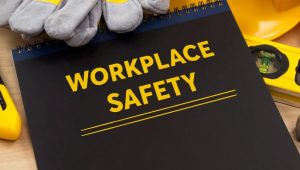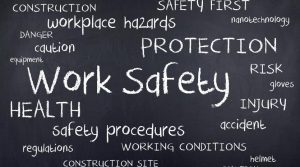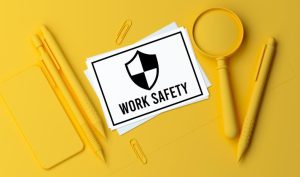Table of Contents
In our bustling and often hectic workplaces, the heartbeat of productivity is intrinsically linked to the health and safety of those who make the wheels turn. Creating a culture of safety is not just about ticking compliance boxes; it’s a commitment to the well-being of every individual contributing to the collective success.
Let’s embark on a journey to explore how, as employers and employees, we can cultivate a safe working environment that goes beyond rules and regulations.
Creating a Culture of Safety
1. Lead by Example: Safety Starts at the Top

Building a culture of safety begins with leadership. When leaders prioritise safety, it sends a powerful message throughout the organisation. Demonstrate safety-conscious behaviour, adhere to protocols, and encourage open communication about potential hazards. A safety-conscious leadership sets the tone for everyone else to follow suit.
2. Empower Employees: The Power of Training and Knowledge
Empowerment comes with knowledge. Provide comprehensive safety training for all employees, ensuring they understand potential risks and how to mitigate them. Regular workshops, drills, and informative sessions equip employees with the necessary skills and foster a sense of shared responsibility for safety.
3. Prioritise Mental Health: A Holistic Approach to Safety
Safety isn’t just physical; it’s mental as well. Recognise the importance of mental health in the workplace. Encourage breaks, provide access to resources, and create an environment where employees feel comfortable discussing mental health challenges. A mentally healthy workforce is a safer and more productive one.
4. Open Lines of Communication: Speak Up for Safety

Communication is the backbone of a safe working environment. Encourage employees to voice safety concerns without fear of reprisal. Establishing an open dialogue ensures that potential hazards are identified and addressed promptly. Whether it’s a near miss or a safety improvement suggestion, every voice matters.
5. Elevating Health and Safety Standards With Professional Help
When it comes to prioritising workplace safety, outsourcing to established and reliable health and safety consultants stands out as a strategic move. For instance, you can turn to tried-and-trusted experts, such as Citation, Manchester health and safety consultants who offer businesses the advantage of experience and specialised knowledge.
Outsourcing health and safety functions to specialist consultants ensures a comprehensive and tailored approach, alleviating the burden on businesses to navigate complex regulations independently.
6. Celebrate Safety Milestones: Small Steps, Big Impact
Celebrate safety achievements, whether big or small. Acknowledge teams that adhere to safety protocols, complete safety training, or propose effective safety measures. Recognising these milestones reinforces the importance of a safety-first mindset and encourages ongoing commitment.
7. Implement Safety Incentives: Rewards for Responsible Behaviour

Consider introducing safety incentives to motivate employees to prioritise safety. Whether it’s recognition, small rewards, or team celebrations, incentives can be powerful tools for reinforcing safe behaviour. This positive reinforcement contributes to the overall culture of safety.
8. Regular Safety Audits: Keep a Finger on the Pulse
Routine safety audits transcend mere regulatory compliance; they serve as a proactive mechanism for pinpointing areas ripe for enhancement. Through periodic assessments, a comprehensive evaluation of the work environment unfolds, ensuring the efficacy and relevance of safety protocols.
The Bottom Line
Fostering a culture of safety is a collaborative endeavour necessitating unwavering commitment, open communication, and a dedication to ongoing enhancement.
It involves understanding that safety extends beyond rigid rules, evolving into a shared responsibility that actively contributes to the collective well-being and prosperity of every individual in the workplace.
As we wholeheartedly embrace these guiding principles, we lay the groundwork for a secure work environment and cultivating a robust and interconnected workplace community.


